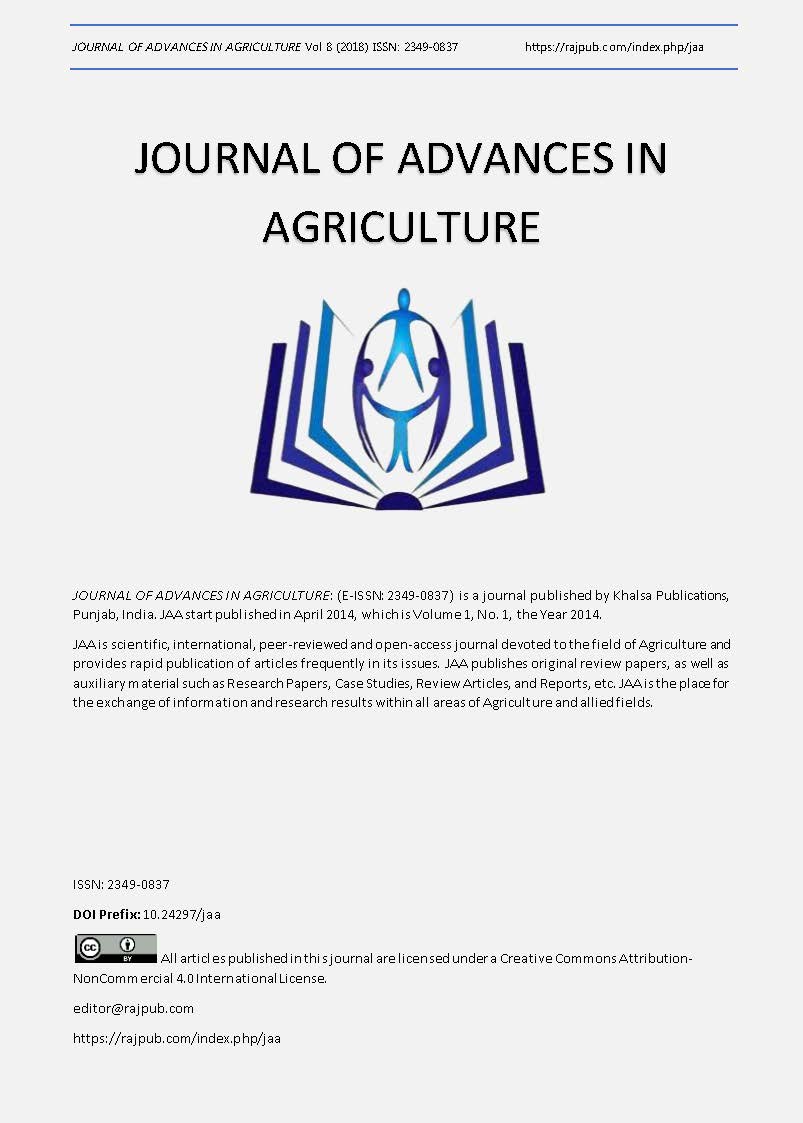Impact of Irrigation Method on Root Rot and Wilt Diseases in Tomato Under Net Greenhouse in the State of Qatar.
DOI:
https://doi.org/10.24297/jaa.v8i1.7771Keywords:
Root rot and wilt, Fusarium solani and Fusarium oxysporum, drip versus buried diffuser, net-greenhouse tomato, salt accumulationAbstract
The study involved the relationship among two irrigation methods; Subsurface Buried Diffuser (SBD) and Conventional Drip irrigation (DI) and their impact on the survival of healthy tomato plant . Tomato plant irrigated with SBD and DI methods were subjected to survey of root or shoot systems fungal diseases and infected vs. healthy Tomato plant survival incidence percentage were recorded. Surveyed tomato plant showing, root rot and wilt symptoms were subjected to isolation trails for the purpose of isolation of the causal organisms. Rhizospheric samples of different healthy and diseased plants were collected at flowering growth stage for determining the frequency occurrence of different fungi associated with the root region of healthy and infected roots of tomato plants under both irrigation methods. It was observed that the Tomato plants irrigated under DI method were more prone to fungal infection than that of SBD method. Pathogenic fungi that contributed in reducing the survival of tomato plant were high in rhizospheric soil irrigated with DI irrigation Method as compared to SBD irrigation method. The root fungal pathogens isolated from rhizospheric soil were Fusarium solani, Fusarium oxysporum, Aspergillus spp., and Pythium spp., which recorded in high frequency comparing with other microorganisms. The genus Fusarium represented in highest records followed by the genus Rhizoctonia and Pythium respectively at all assayed samples.
Downloads
Downloads
Published
How to Cite
Issue
Section
License
 All articles published in Journal of Advances in Linguistics are licensed under a Creative Commons Attribution 4.0 International License.
All articles published in Journal of Advances in Linguistics are licensed under a Creative Commons Attribution 4.0 International License.




